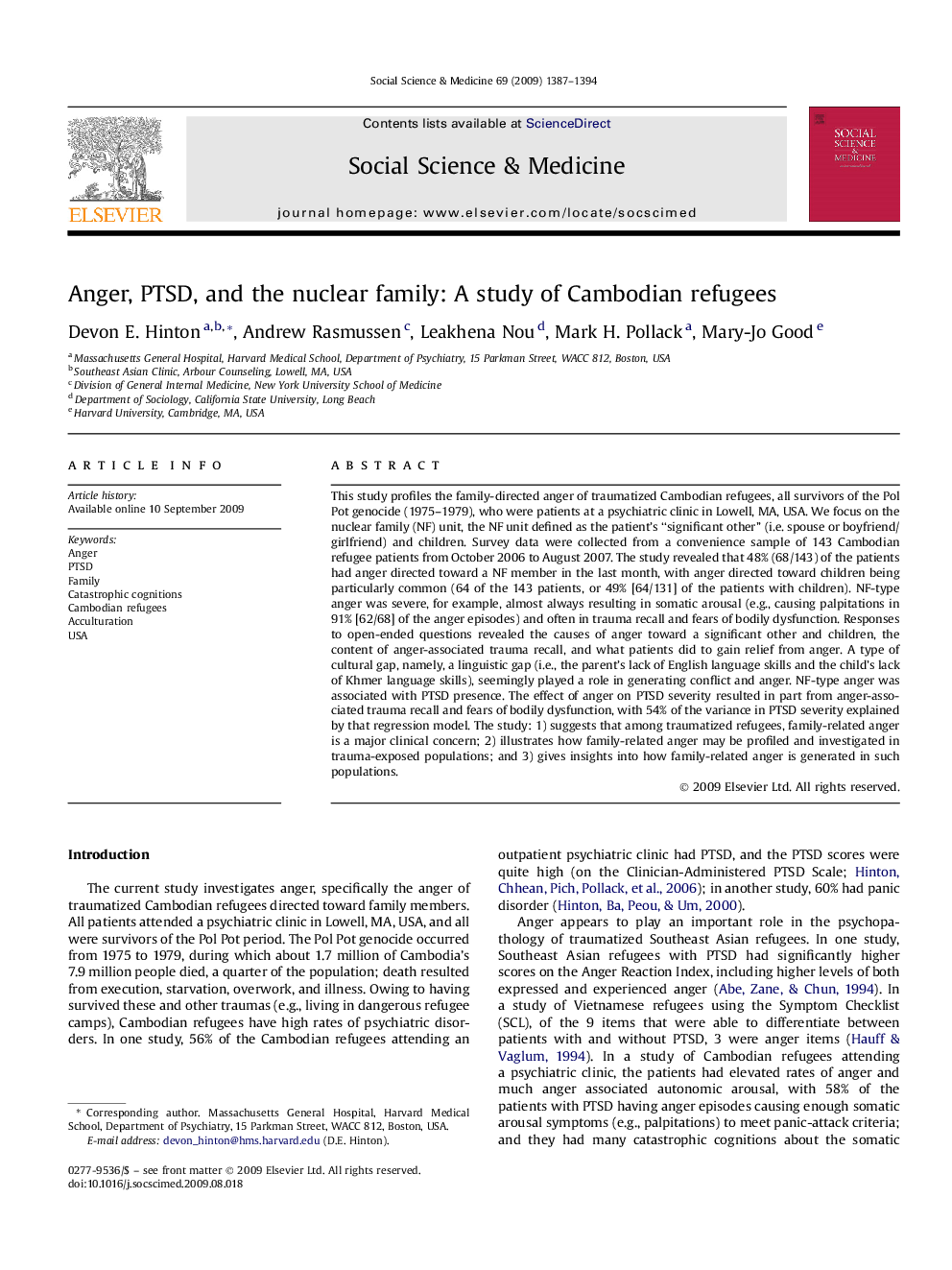| کد مقاله | کد نشریه | سال انتشار | مقاله انگلیسی | نسخه تمام متن |
|---|---|---|---|---|
| 953237 | 927574 | 2009 | 8 صفحه PDF | دانلود رایگان |

This study profiles the family-directed anger of traumatized Cambodian refugees, all survivors of the Pol Pot genocide (1975–1979), who were patients at a psychiatric clinic in Lowell, MA, USA. We focus on the nuclear family (NF) unit, the NF unit defined as the patient's “significant other” (i.e. spouse or boyfriend/girlfriend) and children. Survey data were collected from a convenience sample of 143 Cambodian refugee patients from October 2006 to August 2007. The study revealed that 48% (68/143) of the patients had anger directed toward a NF member in the last month, with anger directed toward children being particularly common (64 of the 143 patients, or 49% [64/131] of the patients with children). NF-type anger was severe, for example, almost always resulting in somatic arousal (e.g., causing palpitations in 91% [62/68] of the anger episodes) and often in trauma recall and fears of bodily dysfunction. Responses to open-ended questions revealed the causes of anger toward a significant other and children, the content of anger-associated trauma recall, and what patients did to gain relief from anger. A type of cultural gap, namely, a linguistic gap (i.e., the parent's lack of English language skills and the child's lack of Khmer language skills), seemingly played a role in generating conflict and anger. NF-type anger was associated with PTSD presence. The effect of anger on PTSD severity resulted in part from anger-associated trauma recall and fears of bodily dysfunction, with 54% of the variance in PTSD severity explained by that regression model. The study: 1) suggests that among traumatized refugees, family-related anger is a major clinical concern; 2) illustrates how family-related anger may be profiled and investigated in trauma-exposed populations; and 3) gives insights into how family-related anger is generated in such populations.
Journal: Social Science & Medicine - Volume 69, Issue 9, November 2009, Pages 1387–1394